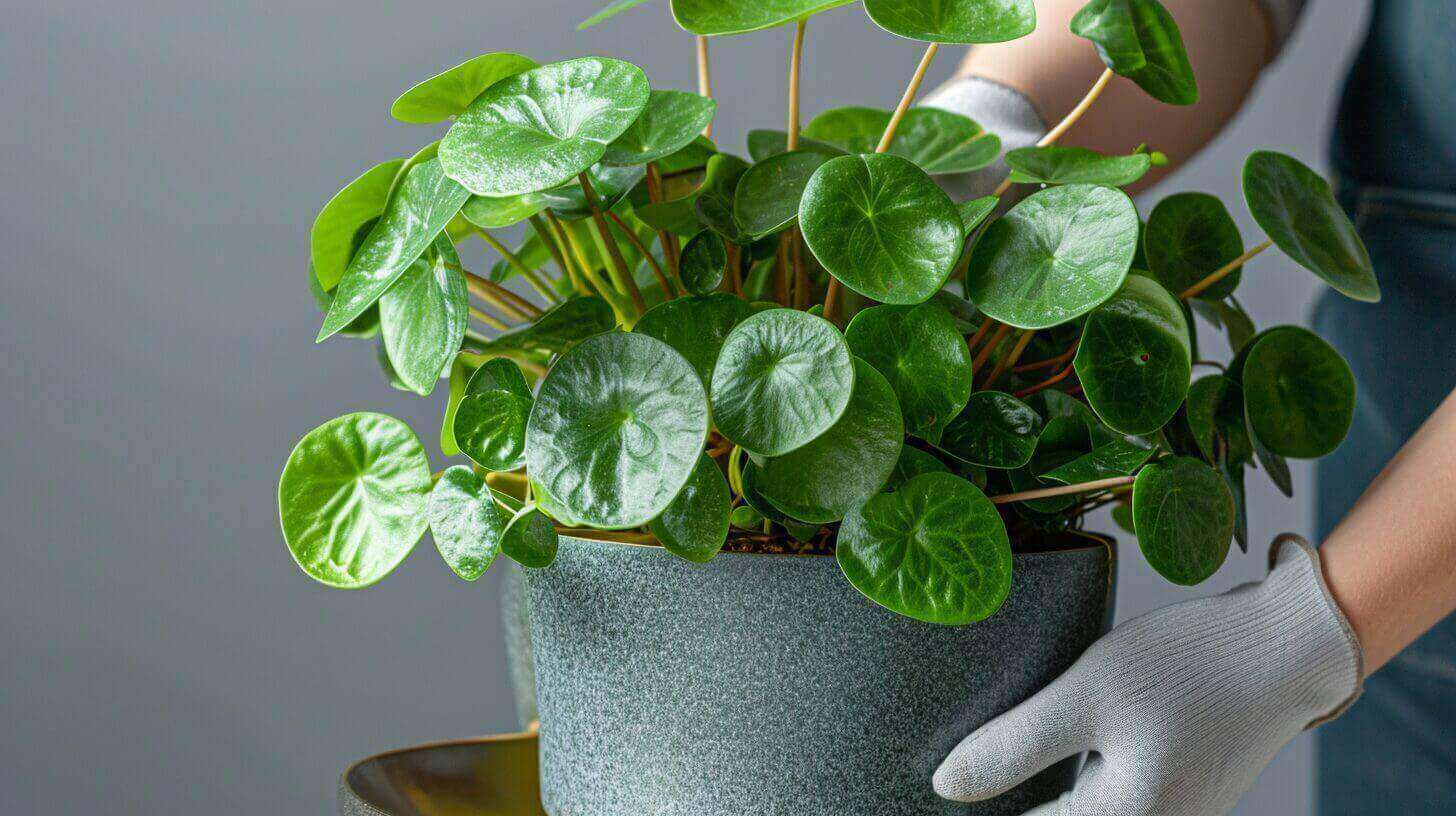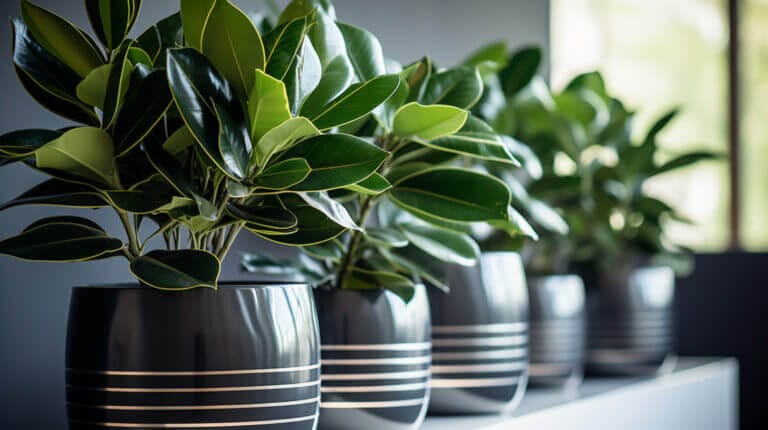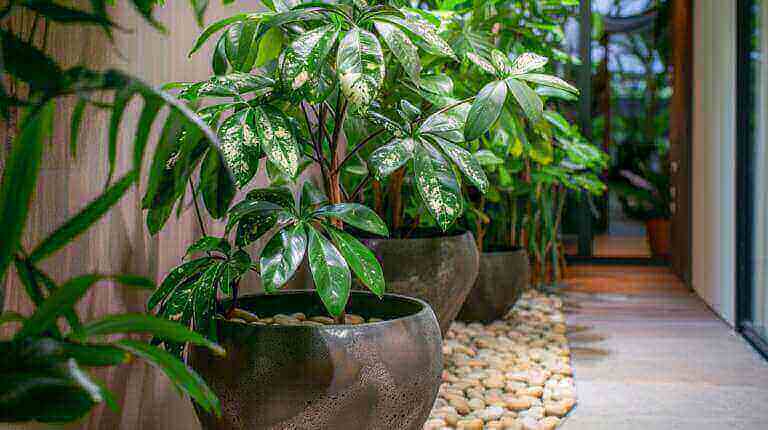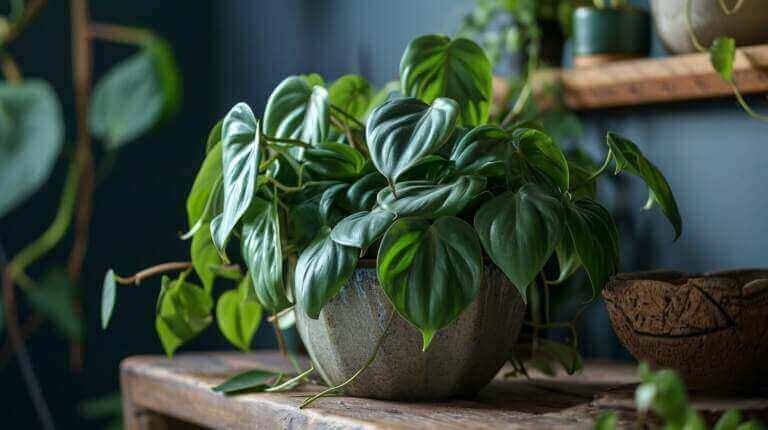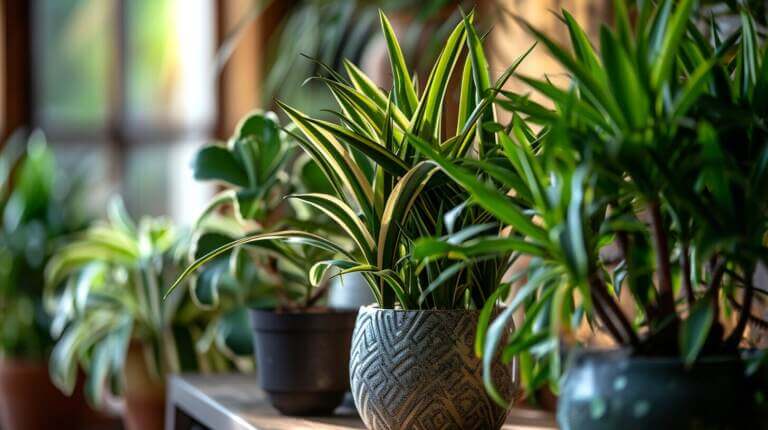How to Repot a Chinese Money Plant(Pilea Peperomioides): When and How to Transplant Pilea Peperomioides Plant
Repotting a Pilea Peperomioides or Chinese Money Plant is an important step in maintaining its health and promoting growth. Knowing when and how to transplant your plant can ensure its long-term success.
Key Takeaways:
- Repotting a Pilea Peperomioides or Chinese Money Plant is crucial for its well-being and growth.
- Signs that your plant needs repotting include wobbly and pale leaves, roots growing out of the drainage holes, a nose-heavy and falling plant, and water running straight through the pot without wetting the soil.
- When repotting, follow step-by-step instructions, including loosening the soil, pruning any dead or rotten roots, and ensuring the plant is not planted deeper than before.
- Choose a slightly larger pot and a well-draining potting mix consisting of coco peat fiber or peat moss mixed with perlite for optimal growth.
- After repotting, provide the plant with a bright but sheltered location, water it appropriately, and refrain from feeding it immediately after repotting.
Signs That Your Pilea Peperomioides or Chinese Money Plant Needs Repotting
Recognizing the signs that indicate it is time to repot your chinese money plant is crucial for its well-being. Here are some key indicators to watch out for:
- Wobbly and pale leaves: If you notice that the leaves of your plant appear weak or are turning pale, it could be a sign that the roots have outgrown the current pot.
- Roots growing out of drainage holes: When you see roots poking out of the drainage holes at the bottom of the pot, it’s a clear indication that the plant is becoming root-bound and needs more space.
- Nose-heavy and falling plant: If your Pilea Peperomioides or Chinese Money Plant starts to lean to one side or topple over, it may be a sign that the roots are overcrowded and can no longer support the weight of the plant.
- Water running straight through the pot: When you water your plant and the water quickly drains straight through the pot without being absorbed by the soil, it suggests that the potting mix is compacted and unable to hold moisture.
By observing these signs, you can determine when it’s time to repot your Pilea Peperomioides or Chinese Money Plant, ensuring its continued growth and health.
Table: Signs That Your Pilea Peperomioides or Chinese Money Plant Needs Repotting
| Signs | Indications |
|---|---|
| Wobbly and pale leaves | Weak or pale leaves suggest that the roots have outgrown the current pot. |
| Roots growing out of drainage holes | If roots are visible through the drainage holes, it’s a sign of root-bound growth. |
| Nose-heavy and falling plant | A leaning or falling plant may be a result of overcrowded roots. |
| Water running straight through the pot | Water quickly draining through the pot indicates compacted potting mix. |
How to Repot a Pilea Peperomioides or Chinese Money Plant Step by Step
Repotting your Pilea Peperomioides or Chinese Money Plant is a straightforward process that can be easily done at home. By following these step-by-step instructions, you can ensure a successful repotting and provide your plant with the best conditions for growth.
Gather your materials:
- A slightly larger pot
- Well-draining potting mix
- Gardening gloves
- Garden shears or scissors
- A watering can
Step 1: Prepare the plant
Start by watering your plant a day or two before repotting. This will help loosen the soil and make it easier to remove the plant from its current pot. Carefully remove the Pilea Peperomioides or Chinese Money Plant, gently loosening the roots with your fingers or a tool if necessary.
Step 2: Prune the roots and clean the pot
Inspect the roots and remove any dead or rotten parts with garden shears or scissors. This will promote healthy growth in the new pot. Clean the new pot with water and mild soap to remove any potential contaminants.
Step 3: Add soil and repot
Add a base layer of well-draining potting mix to the new pot. Place the plant in the center and add more soil around it, ensuring that the plant is at the same depth as before or slightly higher. Gently press the soil to secure the plant in place.
Step 4: Water and care for the plant
Thoroughly water the plant, allowing the water to drain out of the bottom of the pot. Ensure that the soil is evenly moist but not waterlogged. Place the repotted Pilea Peperomioides or Chinese Money Plant in a bright, sheltered location with indirect sunlight. Follow a regular watering schedule and monitor the plant for signs of growth and health.
With these simple steps, you can successfully repot your Pilea Peperomioides or Chinese Money Plant and provide it with the optimal conditions for thriving. Remember to be gentle with the plant’s roots and maintain a regular care routine to ensure its continued well-being.
Choosing the Right Pot and Soil for Repotting a Pilea Peperomioides or Chinese Money Plant
When it comes to repotting your Pilea Peperomioides or Chinese Money Plant, selecting the right new container and soil is crucial for its overall health and growth. Here are some key considerations to keep in mind:
Pot Selection:
Choose a pot that is slightly larger than the current pot size. This will allow room for the plant to grow without overwhelming it. A terracotta pot is recommended for its breathability and excellent drainage capabilities. It also provides stability to prevent the plant from toppling over.
Soil Composition:
Use a well-draining potting mix that consists of coco peat fiber or peat moss mixed with a small portion of perlite. This combination provides the necessary aeration and drainage while retaining adequate moisture for the plant’s roots. Avoid using heavy clay-based soils that can lead to water retention and root rot.
Table:
| Pot Type | Advantages | Disadvantages |
|---|---|---|
| Terracotta Pot | Provides breathability and excellent drainage | Can dry out quickly, requiring more frequent watering |
| Ceramic Pot | Durable and aesthetically pleasing | May not have proper drainage holes, leading to waterlogged soil |
| Plastic Pot | Lightweight and retains moisture well | Less breathable and may cause water retention if overwatered |
Remember, selecting the right pot and soil combination is essential for the health and well-being of your Pilea Peperomioides plant. It will provide the optimal conditions for growth and allow your plant to thrive.
Caring for a Repotted Pilea Peperomioides or Chinese Money Plant
Once you have successfully repotted your Pilea Peperomioides or Chinese Money Plant, it is crucial to provide proper care to ensure its adjustment and continued well-being in its new home.
Find a bright but sheltered location for your plant, away from direct sunlight that may scorch its delicate leaves. This will provide the right amount of light without causing any damage. Remember to maintain a consistent watering schedule, allowing the top inch of soil to dry out before watering again. Overwatering can lead to root rot, so be cautious not to drown the plant.
It is advisable to avoid fertilizing your repotted plant immediately after the transplant. The new soil already contains essential nutrients to support its growth. Instead, give your Pilea Peperomioides or Chinese Money Plant some time to settle into its new pot and adjust to the fresh soil.
Keep a close eye on your plant for any signs of recovery and monitor its overall health and growth. Over time, you can establish a regular care routine tailored to your specific plant’s needs. With proper care, your repotted Pilea Peperomioides or Chinese Money Plant will continue to thrive and bring joy to your space.
FAQ
When is the best time to repot a Pilea Peperomioides?
The best time to repot your Pilea Peperomioides is when the plant is actively growing, typically in the spring or summer. This allows the plant to recover quickly from the stress of repotting.
How often do I need to repot my Pilea?
Pilea plants generally need to be repotted every 2-3 years. However, if your plant is growing rapidly or the roots are crowding the pot, you may need to repot it sooner.
What type of pot should I use for my Pilea Peperomioides?
Choose a pot that is slightly larger than the current one and has good drainage. Terracotta pots are a popular choice because they allow the soil to dry out more evenly.
How do I know if my Pilea plant needs repotting?
Signs that your Pilea may need repotting include roots growing out of the drainage hole, water sitting on the surface of the soil after watering, or the plant becoming top-heavy and tipping over.
How do I repot my Chinese Money Plant?
Carefully remove the plant from its current pot, gently shake off the old soil from the roots, and place the plant in a new pot filled with fresh, well-draining soil. Be sure to water the plant thoroughly after repotting.
What type of soil is best for Pilea Peperomioides?
Pilea Peperomioides prefers a well-draining soil mixture. You can use a standard houseplant potting soil mixed with perlite for added drainage.
Can I propagate Pilea Peperomioides when I repot?
Yes, when you repot your Pilea, it’s a great time to propagate the plant. You can do this by removing the “pups” or small plants that grow at the base of the mother plant and planting them in their own pots.
How do I care for my Pilea after repotting?
After repotting, place your Pilea in a bright, indirect light and water it thoroughly. Avoid fertilizing for about a month after repotting to allow the plant to adjust to its new environment.
How do I choose a pot for my Pilea?
When choosing a pot for your Pilea, consider the size of the plant and the pot’s material. The pot should be slightly larger than the root ball of the plant, and it should have drainage holes to prevent waterlogging.
What should I do with the Pilea babies when I repot?
Pilea babies, or pups, can be left to grow with the main plant or removed and potted separately to create new plants. If you decide to remove them, be sure to use a clean, sharp knife to minimize damage to both the mother plant and the pup.

